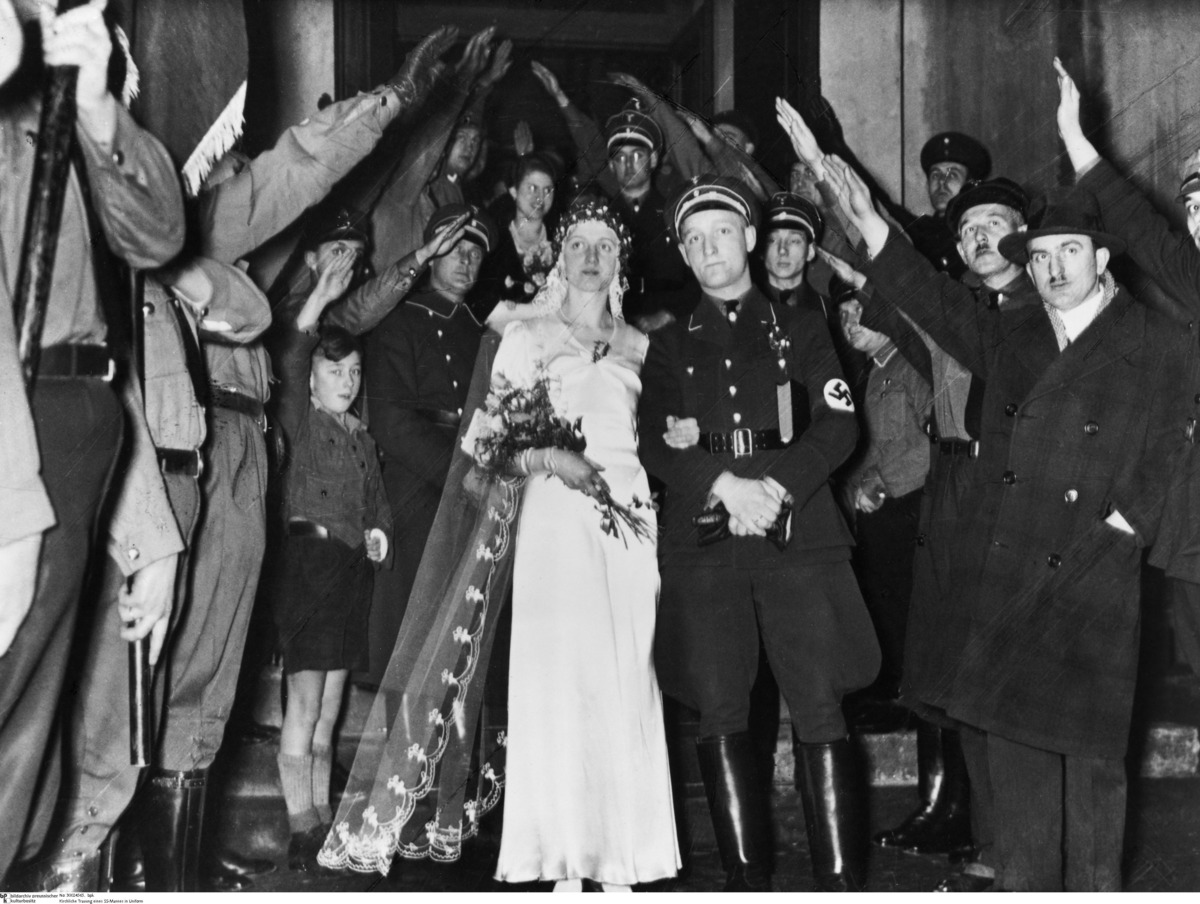Abstract
Most high-ranking representatives of the Nazi regime were well aware
that attacks on deeply rooted religious traditions and church
institutions were associated with grave dangers. As with other radical
social plans, the Nazis postponed the complete “coordination”
[Gleichschaltung] of ecclesiastical
life, or even its total elimination, until after the end of the war. In
the meantime, the regime more or less tolerated a combination of old and
new rituals, ceremonies, and symbols. Himmler, however, was a
particularly vehement enemy of the church and encouraged the members of
his SS to make a clear break with it. He hoped that all SS members and
their families would leave the church and that, when the time came, they
would opt for a “marriage consecration”
[Eheweihe] instead of a church
wedding. The “marriage consecration” was one of many pseudo-Germanic
rituals that Himmler wanted to see in place of church rituals. The image
featured below depicts a traditional church wedding, albeit with Nazi
touches.
